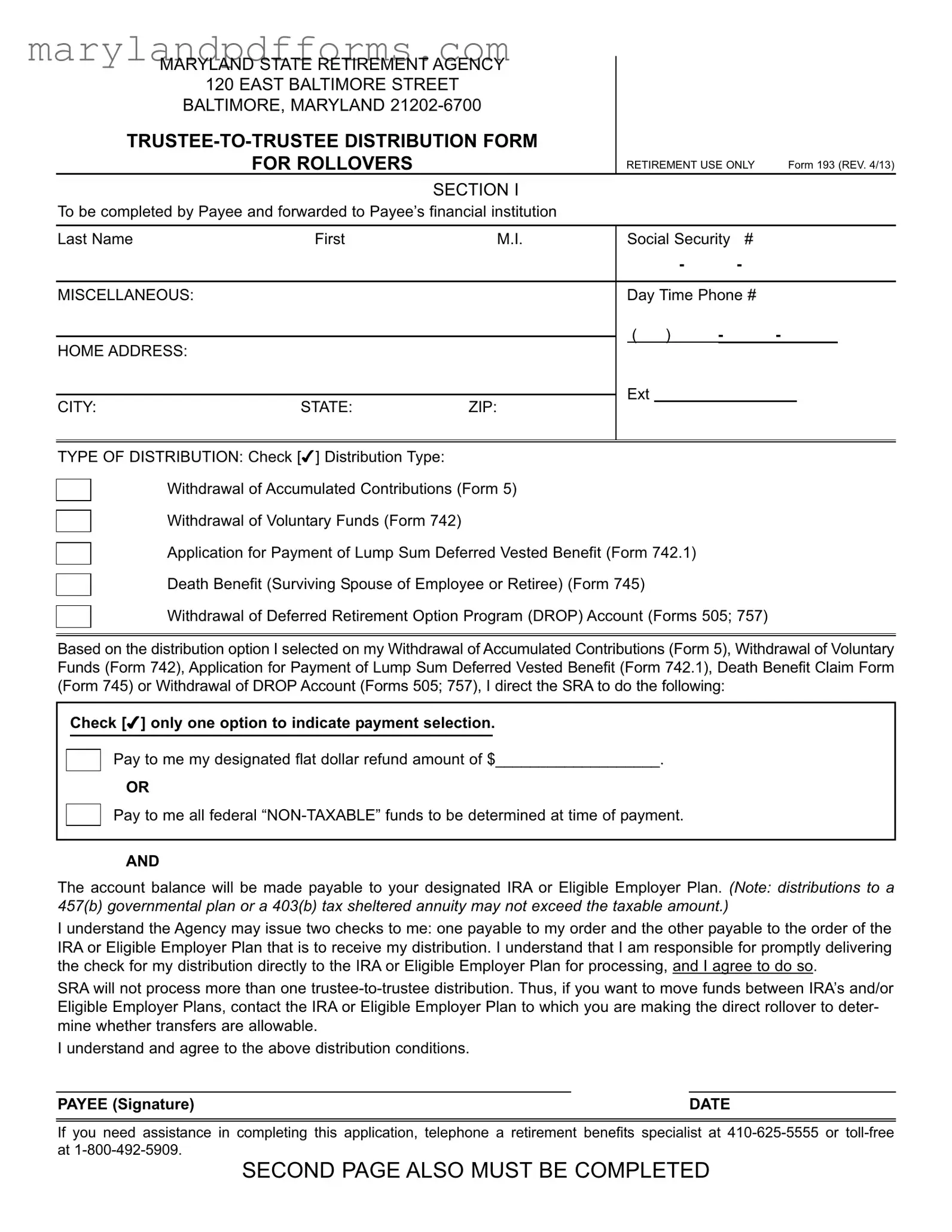Blank Maryland 193 Template
The Maryland 193 form is a Trustee-to-Trustee Distribution Form designed for rollovers within retirement accounts. This form facilitates the transfer of funds from one retirement account to another, ensuring compliance with state regulations. Completing this form accurately is essential for a smooth rollover process.
If you are ready to fill out the Maryland 193 form, please click the button below.
Fill Out Maryland 193 Now
